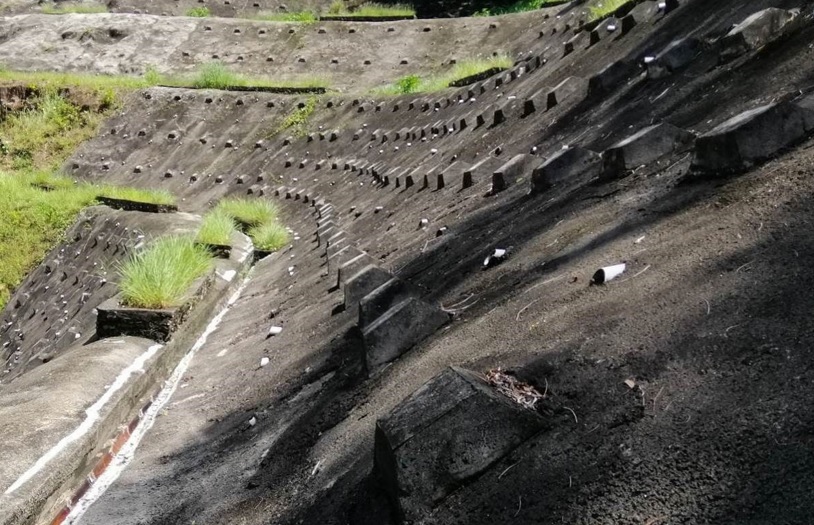Serious attention needed to prevent retaining wall failures (again)

KUALA LUMPUR (June 23): Retaining walls in Malaysia have been peppering news reports with frequent incidents of failures and landslides. In the latest incident at Wisma YPR, a life was lost. It was just last month, but overtaken by other concerns, most of us have probably pushed the episode to the back of our memories.
However, these failures are a cause for serious concern, because not only do they result in property damage and disruption but they also pose significant risks to human lives.
To address this issue, it is crucial to delve into the key factors contributing to retaining wall failures and emphasise the importance of regular maintenance and inspections.
Meticulous design a must
Retaining walls, like other structural elements in building design, require careful considerations from structural engineers. While the design of building structures, columns, and beams primarily focuses on resisting vertical loadings, retaining walls are mostly designed to withstand horizontal forces, usually by “holding back and/or up” the platform and foundation materials. Hence, retaining walls are seen more at hillside developments. Both types of structures demand meticulous placement by architects and design by structural engineers to ensure their integrity and long-term stability.
Regulations and guidelines
The design and construction of retaining walls in Malaysia are guided by several standards and regulations. The Malaysian Highway Authority (MHA) provides specific guidelines for the design of retaining walls on highways. British Standards (BS), including BS 8002:2015 and BS 8110-1:1997, are commonly referenced for the structural design of retaining walls. The Public Works Department (JKR) standards offer comprehensive guidelines encompassing design requirements, construction methods, and materials. Additionally, Eurocodes, a set of European standards, are often consulted for geotechnical design aspects related to retaining walls.
Causes of failure
Understanding the common causes of retaining wall collapse is crucial in addressing these failures. Poor design, inadequate drainage, substandard construction, unfavourable soil conditions, overloading, failure of underground services, and lack of maintenance are key factors contributing to failures. These causes are often interlinked and must be considered throughout the entire lifecycle of the retaining wall, from design to maintenance.
Factors to take into account
Retaining walls serve various purposes, including the protection and stabilisation of human settlements, platforming and terracing in hillside developments, support for dams and reservoirs, and slope stabilisation for highways and roads. Given their critical roles, engineers must consider several factors during the design phase.
Thorough site evaluations and geotechnical investigations, analysis of lateral earth pressure, selection of suitable wall types based on site conditions and project requirements, integration with surrounding infrastructure, design of effective drainage systems, and consideration of safe construction practices and environmental impact are all essential considerations.
Regular maintenance and inspection crucial
While the design and construction phases are crucial, the significance of regular maintenance and inspections cannot be overstated. Retaining walls, like any other structure, require periodic assessment and upkeep. Neglecting maintenance can lead to minor issues escalating into significant problems, eventually resulting in wall failure. Regular inspections help identify signs of deterioration or damage, enabling timely interventions to prevent costly repairs or reconstruction.
In addition to safety considerations, regular maintenance and inspections also prove to be cost-effective in the long run. Investing in routine maintenance and inspections is far more economical than dealing with the consequences of a failure. The financial implications of a retaining wall failure can be significant, including repair and reconstruction costs, collateral damage, and potential loss of life. It’s better to be safe than sorry.
Warning signs
If your property has early indications of cracks, bulging, water seepage, or other unusual conditions regardless of the time of year, flag it up and get an inspection done immediately. Timely action can help identify potential issues with retaining walls and ensure appropriate measures are taken to address them.
Nature not all to blame
In conclusion, the spate of retaining wall failures in Malaysia is a pressing issue that demands immediate attention. As we continue to witness devastating landslides, property damage, and even loss of lives, it is evident that solely blaming natural occurrences is not sufficient.
It is crucial to acknowledge that retaining walls, like any other structural elements in building design, require meticulous planning, adherence to standards, and regular maintenance. Regular evaluations by qualified engineers can detect early warning signs of potential issues, allowing for timely repairs and preventative measures. By adopting a proactive approach to maintenance, we can safeguard our properties, communities, and the well-being of those who rely on these structures.
Ar Anthony Lee Tee is managing director, Architect Centre Sdn Bhd and group chief operating officer and transformation officer, Bina Puri Holdings Bhd; Ir Ng Khiam Choo is Accredited Civil & Structural (C&S) building inspector for Architect Centre and member of the Association of Consulting Engineer Malaysia
Source: EdgeProp.my















POST YOUR COMMENTS